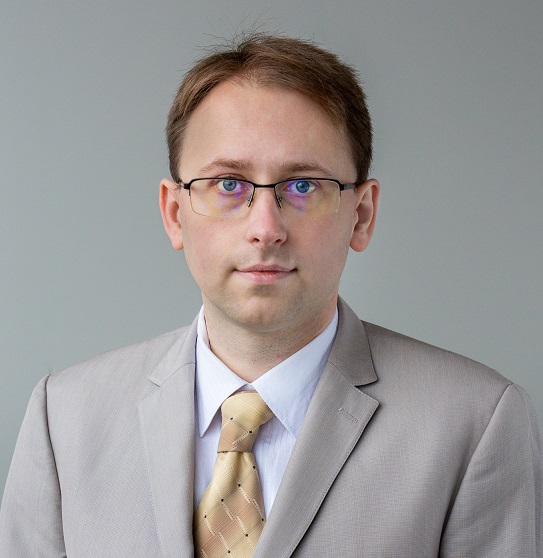Project Aim and Main Tasks
The main goal of the proposal is to develop a specialized unsupervised diagnosis and prognosis platform for electrical energy systems.
Main Tasks
- Development of physical models of different energy system components
- Implementation of Virtual Sensors based on the Digital Twin concept
- Development of an Artificial Intelligence-based system for predictive maintenance
- Development of a small-scale demonstrator of the above concepts
- Development of a power electronic converter with sensor-fault-tolerant control algorithm
- Development of self-monitoring of power electronic converter with self-detection of parasitic components
Results
- 6 journal papers (CA WoS)
- 3 article-based doctoral theses
- 6 other journal papers
- 10 IEEE conference papers
Team (VILNIUS TECH)
- prof. dr. Algirdas Baškys
- prof. dr. Artūras Serackis
- assoc. prof. dr. Raimondas Pomarnacki
Team (University of Adger)
prof. dr. Van Khang Huynh
Team (RTU)
dr. Jānis Zaķis
Team (TalTech)
prof. dr. Anton Rassõlkin
assoc. prof. dr. Toomas Vainmann
Project principal investigators
Project is coordinated by Vilnius Gediminas Technical university (VILNIUS TECH). The consortium includes University of Adger, Tallin University of technology (TalTech), and Riga Technical University (RTU).

prof. dr. Algirdas Baškys
Project Leader, VILNIUS TECH
Prof. dr. Algirdas Baškys has been working in the field of electronic devices for electric motor control since 1988. In year 1988 he was a leader a project dedicated to development of an integrated circuit for the control of the brushless DC motors of a compact camcorder. Since 1990, he has been carrying out applied research and experimental development works on frequency converters for speed and torque control of three-phase and six-phase AC inducon motors. He led two High Technology Development Program projects funded by the Agency for Science Innovation and Technology (MITA), as well as a number of business-funded projects for development of frequency converters for the control of AC induction motors. He developed algorithms for the feedback control of motor speed using frequency converters, as well as three-phase and six-phase frequency converters output voltage forming algorithms. Three doctoral students of A. Baškys defended PhD dissertation in the field of three-phase and six-phase frequency converters for AC inducon motors. A. Baškys has published 186 scientific publications, 35 of which are devoted to the converters used for the control of electric motors and for photovoltaic inverters. He has presented the research results at many scientific conferences in Europe and USA. He did an internship at one of the strongest centers in Europe in the field of control of electric motors - Institute of Energy Technology, Aalborg University, Denmark, 2002. He gave lectures for students and university teachers in the fields of microcontrollers and power electronics in the following universities: Aveiro University (Portugal, 2011 and 2014), Coventry University (UK, 2012), Helsinki Metropolia University of Applied Sciences (Finland, 2012), Karl III University in Madrid (Spain, 2013), Naonal Technical University of Athens (Greece, 2015), Budapest University of Technology and Economics (Hungary, 2016), South-East University of Norway (2017), Gdansk University of Technology (Poland, 2018), Warsaw University of Technology (Poland, 2019).

prof. dr. Artūras Serackis
Chief Researcher, VILNIUS TECH
Prof. dr. Arturas Serackis takes a responsibility of the development, analysis and training of AI based models for Project’s innovative system. He is an experienced researcher in development of AI based solutions for various practical applications, including image feature extraction and classification, speech signal processing, IMU signal processing and analysis in real-time, machine learning based real-time medical signal analysis. His recent successful results includes deep learning application in real-time analysis of far-infrared spectral images, deep recurrent network based solutions for real-time human activity recognition, classification of big unbalanced feature data for prognostic applications.

assoc. prof. dr. Raimondas Pomarnacki
Senior Researcher, VILNIUS TECH
Assoc. prof. dr. Raimondas Pomarnacki was the leader of 2 R&D projects and senior participant in 5 other. 2011 defended his doctoral dissertation entitled "Investigation of Electrodynamic Retardn Devices Using Parallel Computer Systems", published 8 scientific articles, 7 of which are in ISI Web of Science referenced databases with citation index. Participated in over 10 international conferences abroad and in Lithuania. Raimondas focuses on the research and design of electromagnetic devices for various purposes, including antennas, as well as in the fields of electrical engineering and signal processing. Also, he has a significant experiance in software development for the embedded systems for controling, monitoring electrical and electronic devices. Furthermore, for a few years he creating and implementing various signal processing and neural networks methods algorithms to analysis, detect and control various behaviours for the autonomous venchiles, motor control and smart work of the electromagnetic devices such as antennas.
